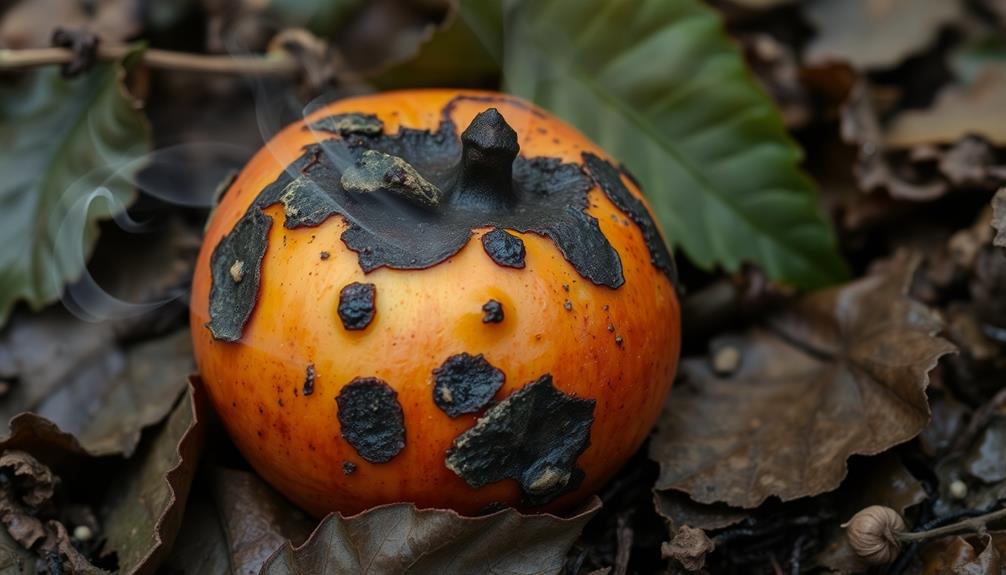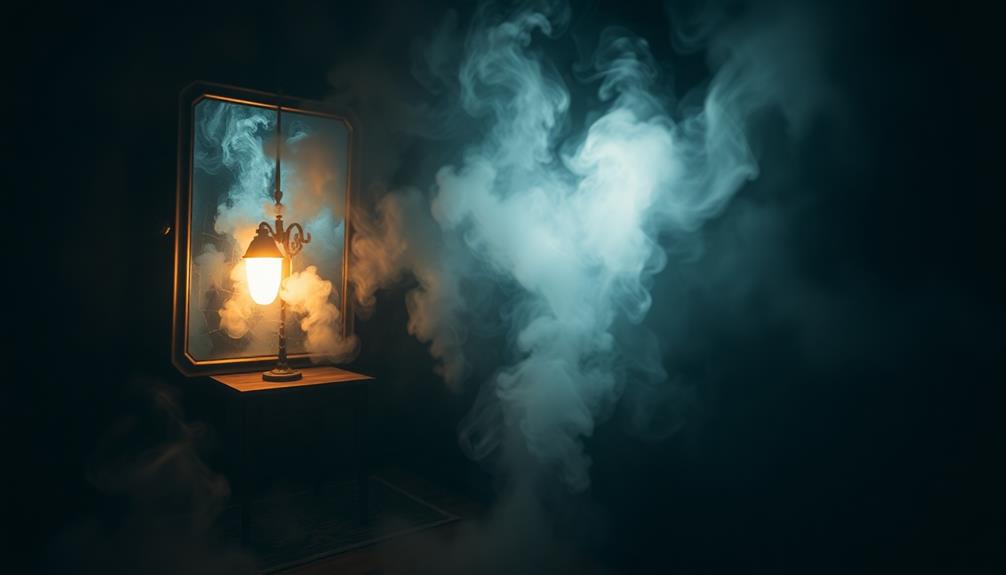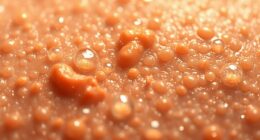Decay smells are strong, unpleasant odors you might associate with rotting fish or flesh. These smells come from gases released as organic matter breaks down, created by bacteria and fungi. You might notice hints of rotten eggs, mustiness, or even a smell like old cabbage! In compost piles, warm, humid areas, or near dead animals, these odors can be really intense. While they might evoke feelings of sadness or disgust, it's essential to be cautious since they can signal health risks. So, if you're curious about what causes these smells, there's more fascinating information waiting for you!
Key Takeaways
- Decay smells are characterized by foul odors reminiscent of rotting fish, flesh, and musty scents from decomposition.
- Key compounds like hydrogen sulfide, cadaverine, and putrescine contribute to the distinctive and unpleasant aroma of decay.
- Environmental factors such as warmth and humidity can intensify decay odors, often leading to a rotten egg smell.
- The scent of decay evokes strong emotional responses, often associated with disgust, sadness, or nostalgia related to death.
- Decay odors can linger in porous materials, necessitating professional cleaning to eliminate persistent smells and address potential health risks.
Introduction
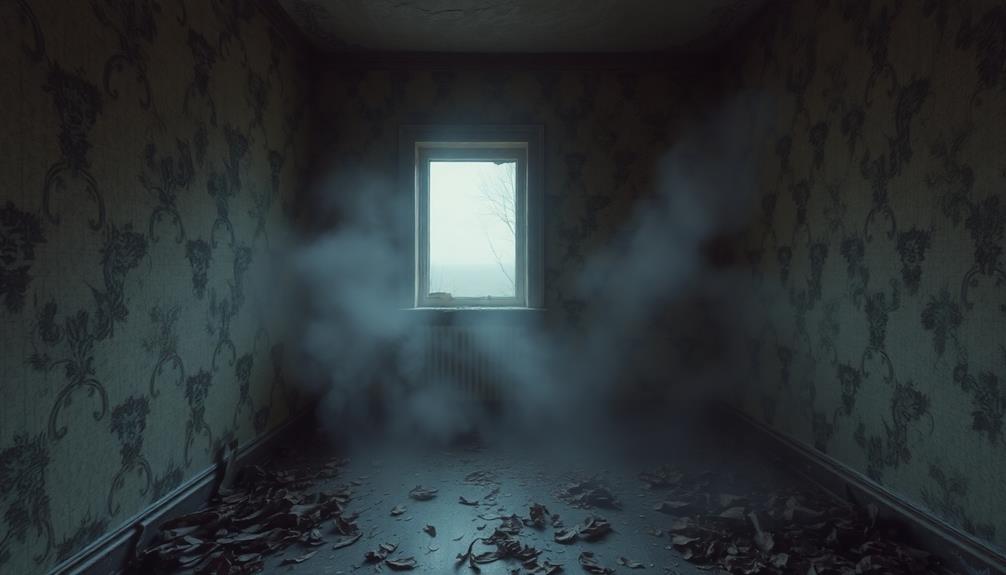
Decay smells are often unmistakable, frequently encountered in both natural and urban environments. You might find them near a decomposing body in the woods or even in a forgotten alleyway. The smell of decay is primarily linked to human decomposition, which occurs when organic matter breaks down. As this process happens, various gases are released, creating a strong and often unpleasant odor.
Changes in the environment, such as temperature and humidity, can also affect the decomposition rate and the intensity of these smells, which can signal the presence of organic matter changes in fingernail color.
Imagine the scent of rotting flesh, mixed with a hint of something musty—this is partly due to compounds like cadaverine and putrescine. You might even notice a fecal-like aroma from skatole or a musty smell from indole. And let's not forget hydrogen sulfide, which smells like rotten eggs, adding to the overall complexity of the decay smell.
As decomposition progresses, especially during the putrefaction stage, these odors become even more intense. The bacterial activity skyrockets, breaking down tissues rapidly and releasing more gases.
It's fascinating, though a bit unsettling, how nature works this way! Understanding these smells helps you appreciate the science behind decay, even if it isn't the most pleasant topic.
Description of the Smell

When you encounter the smell of decay, it's hard to mistake it for anything else; a potent blend of foul odors assaults your senses. The smell of death fills the air, almost overwhelming you. You might first notice a scent reminiscent of rotting fish and flesh, a combination produced by gases like cadaverine and putrescine.
As you take a deeper breath, a strong, fecal odor from skatole creeps in, while indole adds its musty, mothball-like aroma, reminding you that this is part of the decomposition process. This process is similar to how heat pumps operate, as both involve cycles of transformation, albeit in different contexts, showcasing nature's intricate systems the refrigeration cycle.
Alongside these, you can detect hydrogen sulfide's distinctive rotten egg smell, which lingers like a ghost. Methanethiol surprises you with its rotten cabbage scent, a byproduct of brain and blood breaking down.
You might even catch a whiff of dimethyl disulfide and dimethyl trisulfide, which smell like foul garlic, attracting scavengers and insects to the dead body. Each of these scents weaves together to create an unforgettable, pungent aroma of decay that leaves a lasting impression.
Understanding these smells not only deepens your awareness but also connects you to the intricate cycle of life and death.
Source and Composition
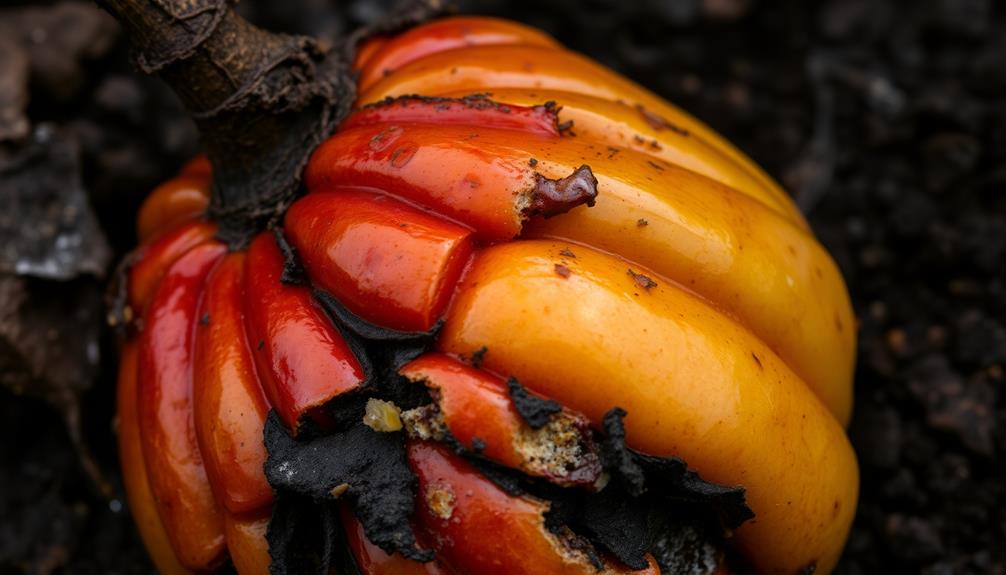
The unmistakable smell of decay originates from the breakdown of organic matter, primarily driven by microorganisms. When plants and animals decompose, tiny bacteria and fungi get to work, breaking down proteins and releasing various gases. Some of these gases, like cadaverine and putrescine, create a strong odor that reminds you of rotting flesh.
Interestingly, just like the health benefits of celery juice can be derived from its breakdown, the decay process also contributes to nutrient cycling in the ecosystem.
As decomposition continues, other compounds join the mix. Skatole and indole come from this breakdown, adding a musty and fecal scent that's hard to ignore. You might also notice hydrogen sulfide, which smells like rotten eggs and intensifies the overall smell of decay.
Then there are other interesting contributors, like methanethiol, which gives off a rotten cabbage scent, and dimethyl disulfide, known for its foul garlic smell. Together, these gases create an overwhelmingly pungent odor.
Even after the source of decay is gone, the smell can linger in the environment, reminding everyone of its presence.
Understanding the source and composition of decay helps you appreciate the natural cycle of life and death. Nature might be a bit stinky at times, but it's all part of a fascinating process!
Typical Scenarios or Environments
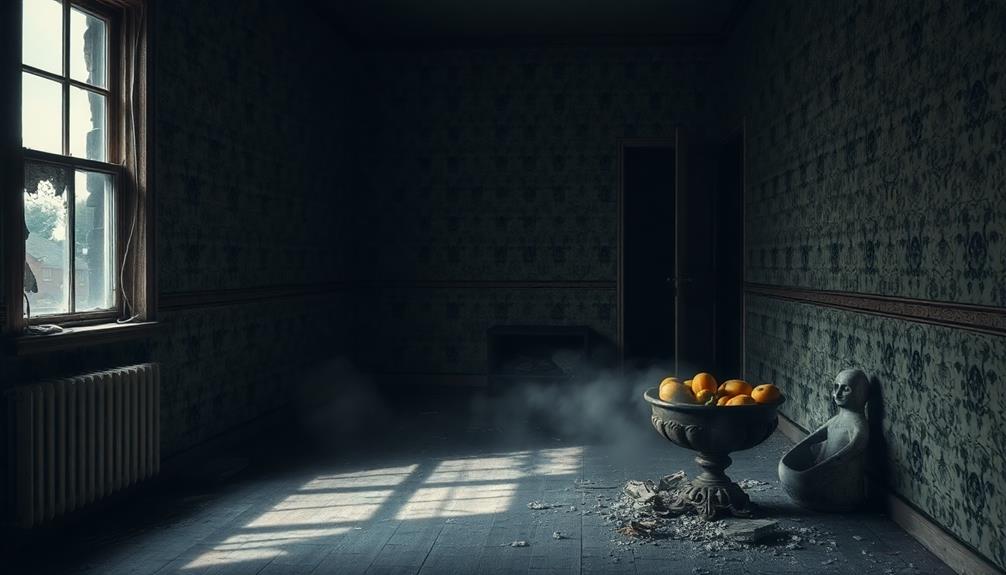
In various settings, the smell of decay can be particularly potent and unmistakable. If you've ever walked past a compost pile, you might've noticed the strong odor of decaying organic matter mixed with the smell of rotting. This smell often comes from cadaverine and putrescine, which are released during the early stages of decomposition.
In warm, humid areas, these scents can intensify, creating a powerful, unpleasant aroma that resembles rotten eggs.
Urban environments aren't spared, either. You might catch a whiff of foul odors from dead animals or improperly disposed food. Those smells often include skatole and indole, which can remind you of mothballs or worse!
Natural settings, like forests, have their own decay smells, too. As leaves and plants break down, they produce a musty scent that indicates nutrient recycling in the ecosystem.
Sometimes, enclosed spaces like attics or basements can trap decay odors from dead rodents or hidden organic materials. This can lead to a pungent stench that lingers until you take action.
Emotional or Cultural Associations

Decay's scent stirs powerful emotions, often triggering feelings of disgust, sadness, or even nostalgia. This smell, closely tied to death, can remind you of loved ones who've passed away, pulling at your heartstrings. Each whiff might transport you back to moments of mourning, where you felt that deep ache of loss.
In many cultures, the odor of decay symbolizes death itself and plays a significant role in rituals and practices surrounding grief. You might find that some traditions treat this smell as a natural part of life, while others view it as unsettling. This difference shapes how people react when they encounter decay's scent.
Art and literature also explore this theme, using decay's smell to express thoughts about mortality and the human experience. You may come across poems or paintings that evoke feelings about life's fragility, making you reflect on your own journey.
Ultimately, decay's scent is more than just an unpleasant odor; it connects to powerful emotions and cultural beliefs. So, next time you catch a whiff, consider what memories or feelings it might bring to the surface.
Health or Safety Considerations
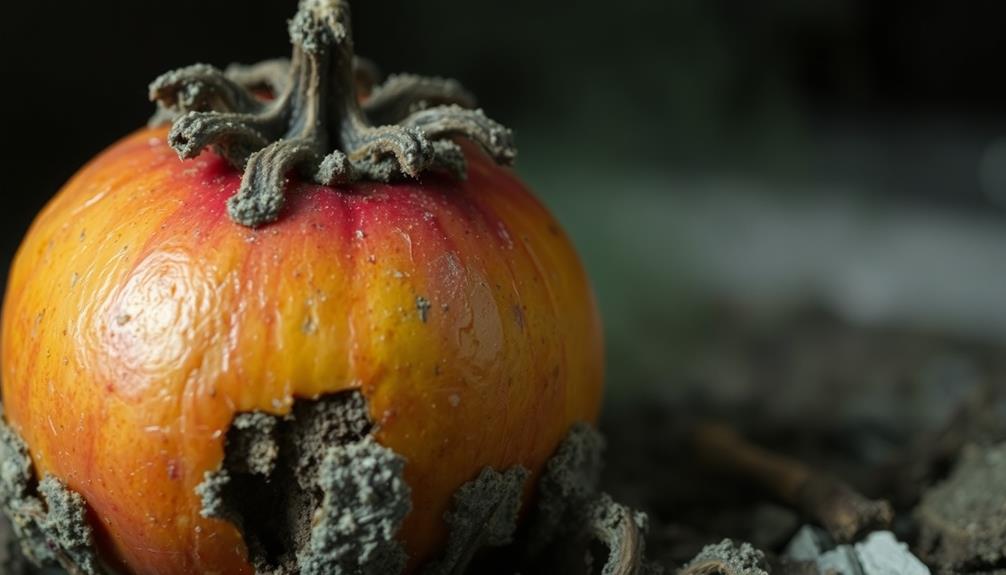
Encountering the scent of decay can be unsettling, but it's important to recognize the health risks it poses. The gases released during decomposition, like hydrogen sulfide and methanethiol, can irritate your respiratory system, cause skin rashes, and lead to allergic-type symptoms.
If you ever find yourself near decomposing bodies, it's crucial to exercise caution.
You mightn't realize that these decaying remains can harbor dangerous pathogens in bodily fluids. That's why using personal protective equipment (PPE) like gloves, masks, and goggles is essential. It's your first line of defense in environments affected by decomposition.
The strong odors from decay often indicate the presence of volatile organic compounds and other hazardous materials. In these cases, calling a professional biohazard cleanup team is vital to ensure safety and proper remediation. They know how to handle the situation and protect you from potential health risks.
Cleanup involves thorough disinfection and removal of affected materials, preventing lingering odors and any future health hazards.
Final Thoughts
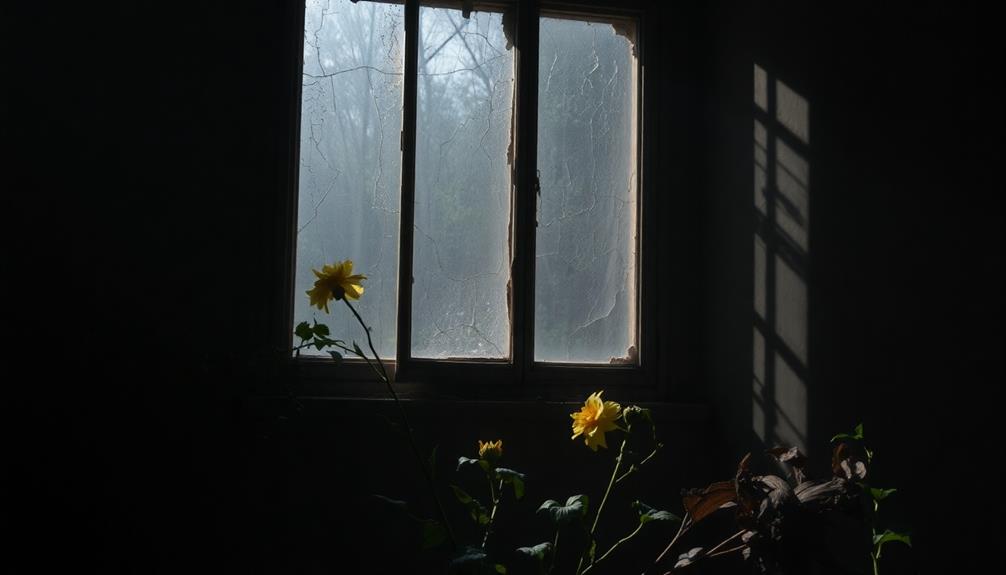
While the odor of decay can be distressing, understanding its implications is crucial for your safety and health. The smell we associate with decay comes from gases released during the breakdown of organic matter. You might notice this unpleasant scent when something like food or plants starts to rot. It can smell like rotten fish, rotten eggs, or even something musty, making it hard to ignore!
As bacteria break down proteins, they produce foul compounds that add to the intensity of the smell. You might even catch hints of scents like feces or indole, which can remind you of mothballs. It's interesting how complex chemical processes create this unique odor.
Even after the source is removed, these decay odors can linger, soaking into porous materials like wood or fabric. That's why professional cleaning can be so important.
If you ever encounter these smells, remember: they signal something is wrong. Addressing the source quickly can help keep your environment fresh and safe. So, pay attention to those unpleasant odors—they're your nose's way of protecting you!
Frequently Asked Questions
What Does Human Decay Smell Like?
Human decay produces an overwhelming odor, often described as a mix of rotten fish, eggs, and feces. You might find the scent lingering, permeating fabrics and surfaces, making it hard to eliminate even after cleanup.
Does Decay Smell Sweet?
No, decay doesn't smell sweet. Instead, you'll encounter overwhelming and foul odors from gases like hydrogen sulfide and compounds like putrescine, which create a distinctly unpleasant scent that's hard to forget.
Does Decay Smell Bad?
Yes, decay smells bad. You'll likely notice foul odors from gases released during decomposition. These smells can be overwhelming, reminiscent of rotten fish, spoiled food, or even rotten eggs, creating an unmistakable unpleasant experience.
How Long Does the Smell of Decay Last?
The smell of decay can linger for weeks or even months, depending on factors like temperature and humidity. You might need professional help to fully eliminate it, as standard cleaning often won't suffice.
